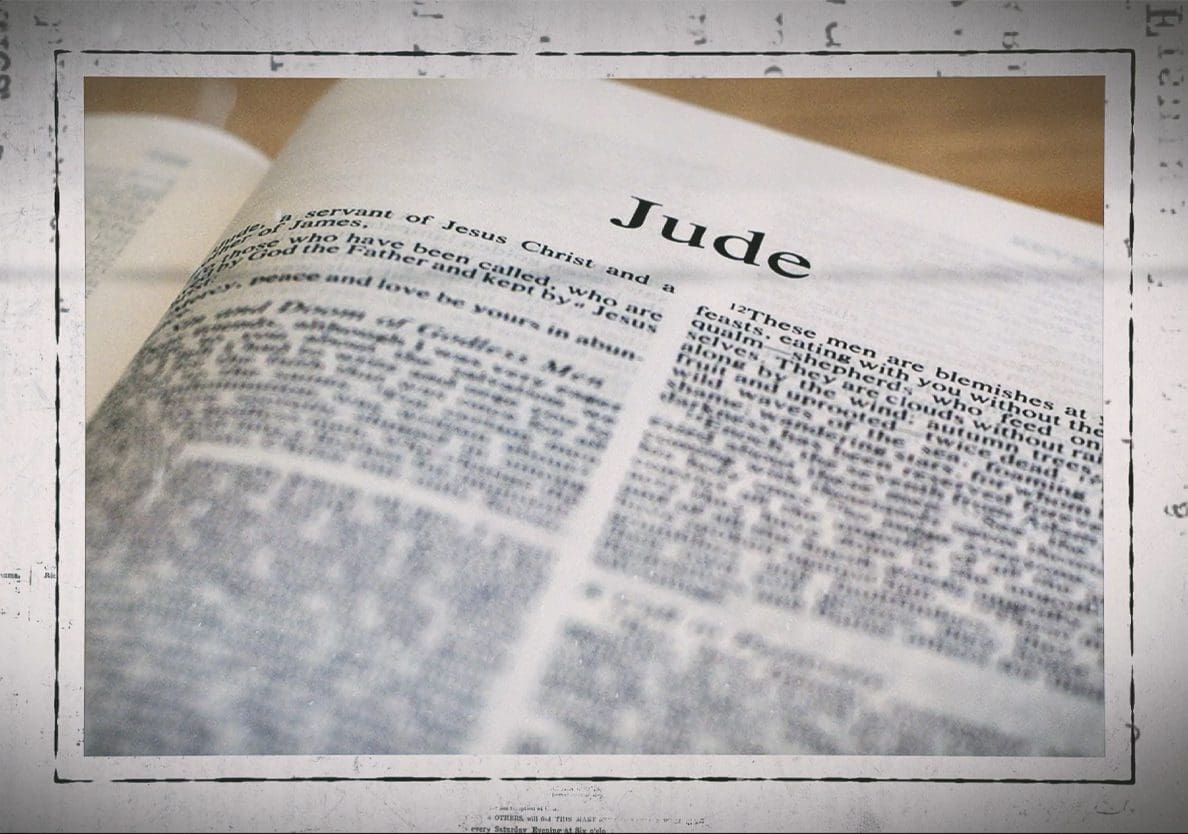After the three letters of John, but before the book of Revelation, is a very small book in the NT canon entitled “Of Jude” in the Greek. As its title suggests, and as the introduction of the letter makes clear, this short but hard-hitting book—which was written to warn believers about false teachers who had secretly infiltrated the church—was penned by Jude the “brother of James” (v.1). Interestingly, the only brothers named Jude (Judas in Hebrew) and James in the NT are the half-brothers of Jesus (Matthew 13:55; Mark 6:3). Although neither man identifies himself as our Lord’s brother, other Biblical writers do (Matthew 13:55; Mark 6:3; Acts 1:13-14). Even the early church testified to their identity.[1] Although some, in trying to cast doubt on the canonicity of this book, have suggested that an anonymous author wrote this letter merely posing as Jude, “it is unlikely that any imposter would choose the name of such an insignificant figure for his writing.”[2] But if these two men were indeed the brothers of Jesus, then why not identify themselves as such? Jude and James probably did not want any special consideration just because they were sons of Mary and Joseph, or brothers of Jesus. So, rather than identifying himself as a brother of Jesus, Jude (as James does in James 1:1) refers to himself only as a “servant (or slave, in Greek) of Jesus Christ”. The reason he identifies himself as a brother to James is probably because James’ prominence as a leader of the Jerusalem church would help clarify his own identity and authority.[3]

Date
As far as the dating of this letter is concerned, it certainly could not have been written past AD 90 since a brother (even a younger brother) of Jesus could not have lived past this time. A major key in accurately dating Jude is 2 Peter. This is because both letters describe similar false teachings, which suggests that they were written around the same time. As one scholar explains, “Both letters denounce false teachers with very similar language (compare 2 Peter 2:1-3:3 with Jude 4-18). Since the order is similar and since the Bible does not use many of these words and expressions elsewhere, some kind of relationship probably exists between [Jude and 2 Peter].” [4] The good news is that we know 2 Peter was written between 63-65 AD. But the bad news is that we don’t know which letter came first. Did Peter borrow from Jude or did Jude borrow from Peter? If Jude used Peter as his source, then his work would postdate 2 Peter. On the other hand, If Peter used Jude as his source, then Jude would obviously predate Peter.
Adding to the mystery is the fact that there are scholars on both sides of the fence who present very convincing arguments for each scenario. For example, New Testament scholar Peter H. Davids believes that it was Peter who edited and adapted Jude (which possibly included removing the direct references to the non-canonical books) to form his second chapter. The reason he believes this is because “Unlike 2 Peter, Jude was cited relatively early and included in the early canon lists.”[5] Then again, scholars such as J. Wesley Adams believe that it was actually Jude who borrowed from Peter since Jude directly quotes 2 Peter 3:3 and even acknowledges that this message came from the apostles (vv.17-18).[6] Since there is no way of knowing for sure which letter came first, scholars date Jude anywhere from 60-80 AD.


Addressees
Somewhat of a mystery is to whom Jude was writing. While it is evident that he wrote to a specific church or group of churches (even though Jude has been classified as a general letter) not much else is known. However, at the very least, the Jewishness of Jude’s letter suggests that the recipients were primarily Jews, perhaps living in the midst of a Gentile culture,[7] possibly even Syria, which was a place known for the kind of heresy Jude (and Peter) was describing.[8]
Special Literary Features
Part of what makes Jude’s letter so Jewish (and so unique) is his mixture of Holy Spirit inspired Scripture with a bit of Jewish tradition. For example, he tells of the archangel Michael’s dispute with the devil over the body of Moses, which is from a pseudepigraphal Jewish text called The Assumption of Moses. He also quotes a prophecy from the pre-Flood prophet Enoch, which comes from a non-biblical Jewish writing known as 1 Enoch. Of course, as Dr. Henry Morris pointed out, Jude’s references to these extra-biblical writings do not mean that the books themselves were inspired writings, but rather that certain portions of them did convey authentic histories.[9] Also notice that “Jude cites neither of these books as ‘Scripture,’ nor does he use traditional formulas to introduce them”.[10]
Another unique feature of Jude is his repeated use of triads (or series of threes) to make his points. For example, there are three OT examples of judgment (v. 5-7), a three-part description of the false teachers (v. 8), and three OT examples of ungodly men (v.11).[11]
Even though it is only twenty-five verses long, Jude is truly a magnificent work of the Holy Spirit that is “profitable for doctrine, for reproof, for correction, for instruction in righteousness” (2 Timothy 3:16).

Ryan Hembree is a daily co-host, speaker, and writer of Bible Discovery. He also hosts a YouTube channel that shows the unity of the Bible and how science and Scripture fit together. Ryan also has an honorary Masters of Ministry in Creation Science from Phoenix University of Theology.
[1] Douglas J. Moo & Andrew David Naselli, NIV Biblical Theology Study Bible, Introduction to Jude, 2268-69, D.A. Carson General Editor.
[2] Doug Oss & Thomas R. Schreiner, ESV Study Bible, Introduction to the Letter of Jude, 2447-48, General Editor Wayne Grudem.
[3] J. Wesley Adams, Fire Bible: English Standard Version, Introduction: Jude, 2233-34, Donald C. Stamps General Editor.
[4] Douglas J. Moo & Andrew David Naselli, NIV Biblical Theology Study Bible, Introduction to 2 Peter, 2249, D.A. Carson General Editor.
[5] Peter H. Davids, Theological Interpretation of the New Testament, Jude, 229, Kevin J. Vanhoozer General Editor.
[6] J. Wesley Adams, Fire Bible: English Standard Version, Introduction: Jude, 2233-34, Donald C. Stamps General Editor.
[7] Douglas J. Moo & Andrew David Naselli, NIV Biblical Theology Study Bible, Introduction to Jude, 2268-69, D.A. Carson General Editor.
[8] Ron Hembree, Quick Study Bible, Jude, 1568.
[9] Henry Morris, The Henry Morris Study Bible: King James Version, Introduction to Jude, 1976.
[10] Douglas J. Moo & Andrew David Naselli, NIV Biblical Theology Study Bible, Introduction to Jude, 2268-69, D.A. Carson General Editor.
[11] J. Wesley Adams, Fire Bible: English Standard Version, Introduction: Jude, 2233-34, Donald C. Stamps General Editor.






